Rather no horn than no rhino
on May 07, 2024With Rhino poaching continuing in 2024, people often still wonder why rhinos get killed to harvest their horn, rather than to be immobilised and trimmed for a more sustainable business. There are a lot of aspects we can look at to get a better understanding of the sad truth and why these prehistoric looking animals are being slaughtered around Africa, specifically in South Africa.
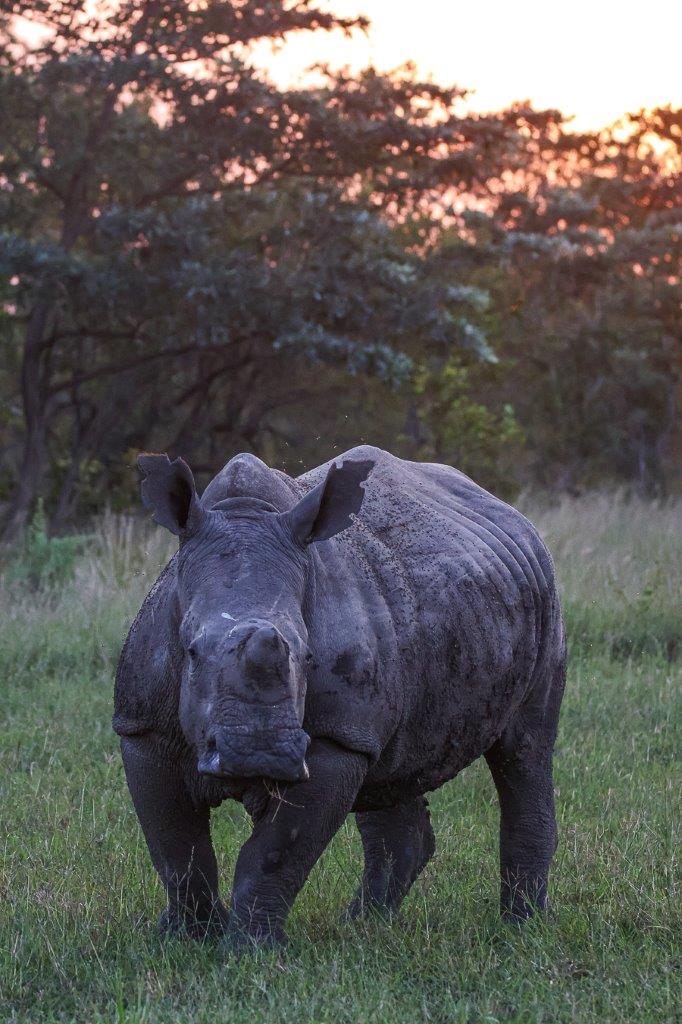
Rhino horn is one of the most valued materials in the world, with prices going up all the way to 60 000 US dollars per kilogram on the black market. Because of this ridiculous price, it attracts lots of unwanted and unneeded attention to these beautiful and relaxed animal species.
As conservationists we try our best to keep these disappearing animals safe and protect them at all costs for future generations. Throughout the majority of South Africa, rhinos have been dehorned, meaning we immobilise them with the help of wildlife veterinarians who take DNA samples, measure the horn, and take the horn off with a chainsaw or saw, usually about 7 cm from the base of the horn ensuring no pain as we don’t cut into the nerve, it is basically the same as clipping your nails. We then round the horn off with a grinder to ensure there are no sharp edges. Doing this still allows the rhino horn to grow back roughly 2-3 inches per year depending on the nutrients in the area where the rhinos feed.
A rhino horn consists of keratin, the same material as our nails, which means there is no special material inside. Some Eastern countries have traditional beliefs regarding this, including medicinal value that they believe the horn has to offer. Even with scientific proof that shows there is no special material, these animals still get poached and killed for their horns.
The question on a lot of people’s minds is why poachers kill the animals and why don't they immobilise the animal and harvest the horn like we do?
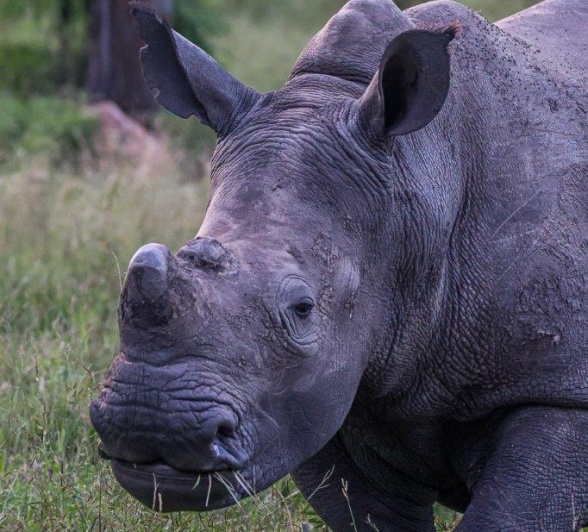
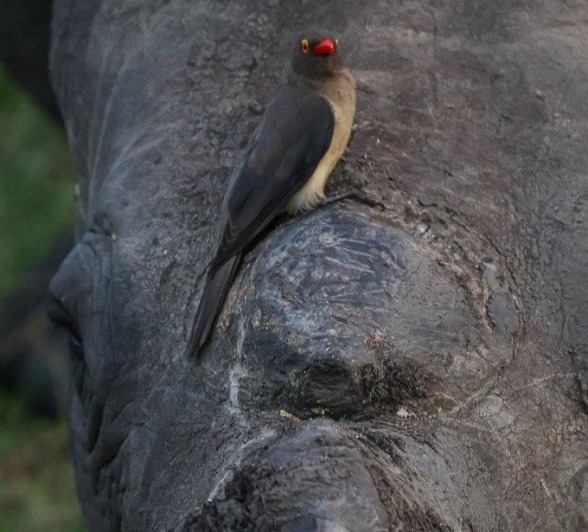
There are several reasons why these magnificent species get killed by poachers. One thing we must remember is that the word ‘poachers’ means illegal hunters. These people come into National Parks and private reserves illegally and kill the animal which don't belong to them. These people often have very tough life circumstances and get approached by big syndicates from all over the world, offering them a pay day which relieves pressure off them. They sometimes spend weeks in National Parks or private reserves before poaching, scouting areas which are not as often travelled by people and areas where there might be a high density of rhino movement. They get familiar with the routine of the area and plan everything to the finest detail, just like any other crime or robbery.
These poachers get illegal firearms from the black market, usually big calibres like .375 H&H or .458 Winchester Magnums which are powerful enough to take a rhino down with one shot. The rifles they usually get provided with by the syndicates and ammunition for these calibres can be bought from R100 (roughly 5 dollars) per round. Taking this into consideration it is very cheap to use. Now even though the rifle makes a lot of noise when being discharged, they are usually very close to these animals as rhinos have very bad eyesight and with the wind in your favour, you can get very close to these animals on foot. As the animal goes down, they use a panga or machete to chop half of the face off, as the horn still goes into the skull as well and with the price per kilogram so high, they want to get as much as possible. Within 20 minutes they are already on their way towards the closest boundary or exit to escape. They travel on foot to go unseen and ensure they do not attract any attention as they can see and hear vehicles, helicopters, or any means of transport in the area and hide away. They often run into trouble with all the different dangerous animals we have roaming around this area where they meet their match. After they have taken half the face of the rhino, they start their journey to get out of the protected area where other criminals will be waiting for them to get them into safety and escape the manhunt that’s on them.
As the gunshot attracts attention immediately, it’s important to remember the vastness of the areas we operate in, and at dark it is not always easy to find the exact location of the incident. Giving poachers the time they need to get what they came for and get out, most of them do get caught as our Counter Poaching Units are very well trained and well equipped for the task at hand, operating our areas 24/7. But you always have the risk of losing more rhino and not catching the poachers.
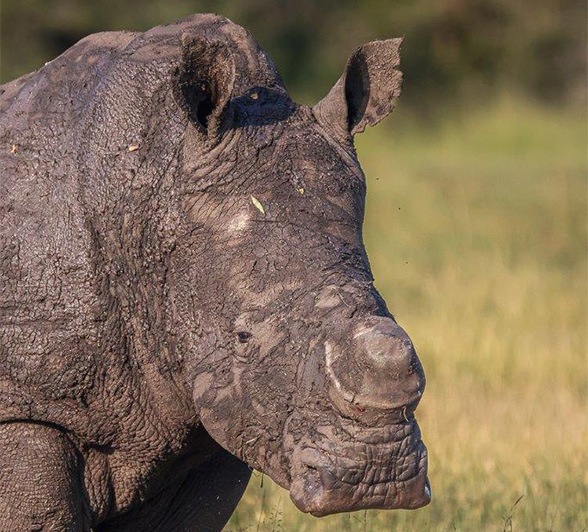
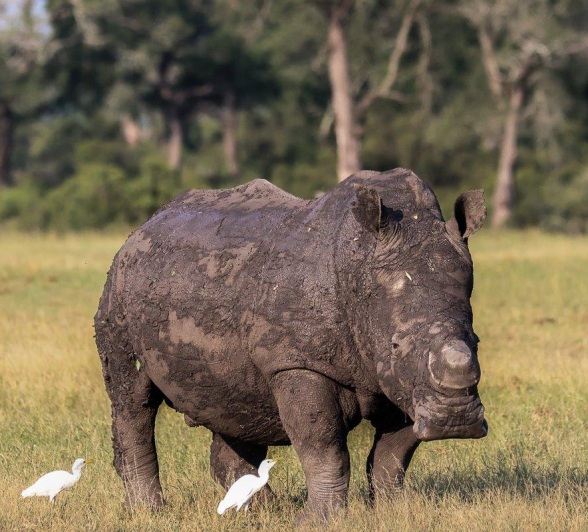
Now the way we immobilise our rhino to do the dehorning process doesn’t only take a lot of time, but also money and the trained veterinarians you need for the job. We use a drug called M99 which is thousands of times stronger than normal morphine that is used on humans. Rhinos need to be searched for by helicopter to find them easily then the rhino will be darted from the air, and it will take 3-4 minutes for the rhino to go down. It is then blindfolded, and earmuffs placed over their ears to relieve pressure off these animals as they are not asleep, but only immobilised. You need to do the measurements correctly before cutting the rhino horn and an antidote needs to be given to wake the rhino up again. The amount of drugs will be different for every size group of rhino making it even more difficult and indicating the importance of a well-qualified wildlife vet present. This whole operation costs around R15,000-R20,000 (roughly 1000 US dollars) for an hour’s work.
We are also only able to do this in the early morning as temperature plays a vital role in the dehorning process. As soon as temperatures go over 25 degrees Celsius you are starting to run the risk of the animal dehydrating and overheating, and the heart rate might be higher than usual, and pressure might be on the lungs.
Poachers don’t have time on their hands to worry about this as well as they will take the opportunity any time of the day or night when it is presented to them, these people are not conservationist or ethical regarding the environment and the animals.
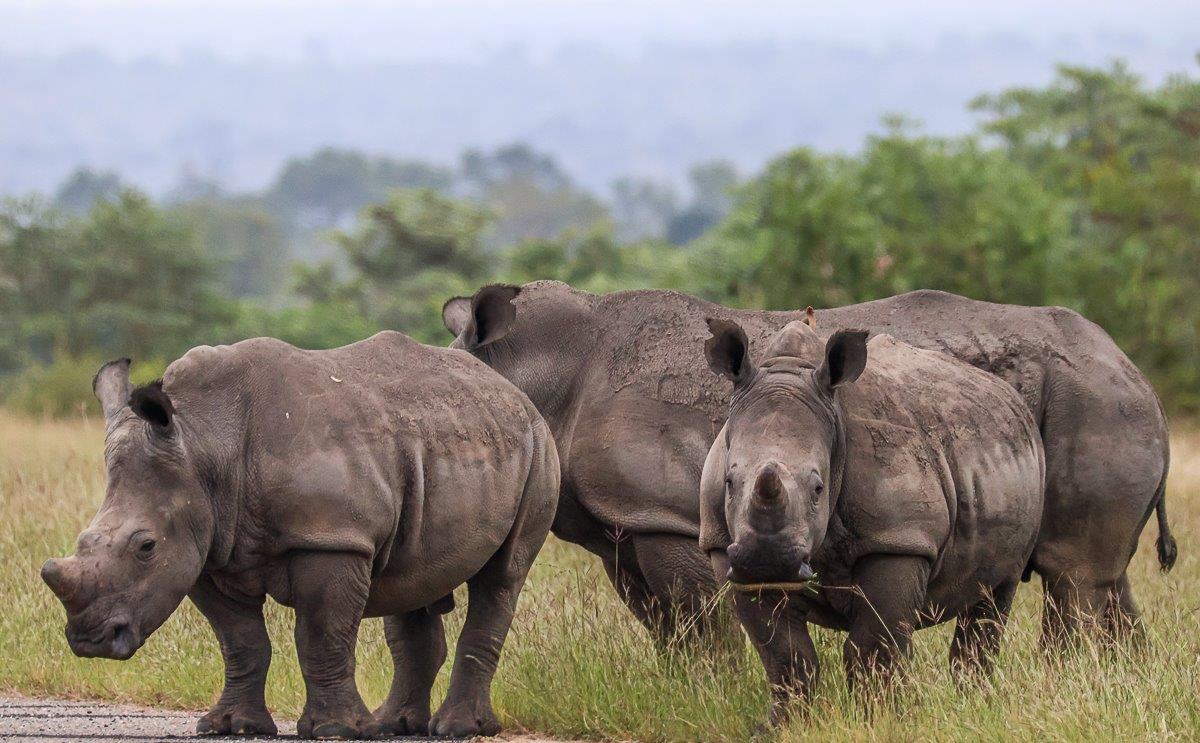
Also thinking about all the equipment that is needed to successfully do the job it is impractical for 2 or maybe 3 people walking on foot for potentially weeks to find the rhinos and the right place to carry everything. With the prices also being much higher and they can’t take the maximum amount of horn because it needs to be cut plus minus 7 cm from the base of the horn, they are losing money for the extra kilogram or two they are leaving behind, meaning they are not only paying hundreds of times more for the procedure but also getting less money for the product they are here for.
Paying R100 is much cheaper than R15,000 - R20,000 for equipment they need to harvest the horn, and only carrying a rifle is much easier than carrying chainsaws, grinders and equipment to relieve pressure off the animal plus the drugs and antidotes they need to use.
They come in with as little luggage as possible, making it light and easy to walk and hide away when being looked for. They identify their target and watch the movement of the area, getting to know at what times the area is not very densely occupied, and are close enough to the animal to ensure a quick kill, get to the rhino and cut half the face off and start their exit plan to get out while everyone is still scattering around trying to pinpoint the exact area of the incident.
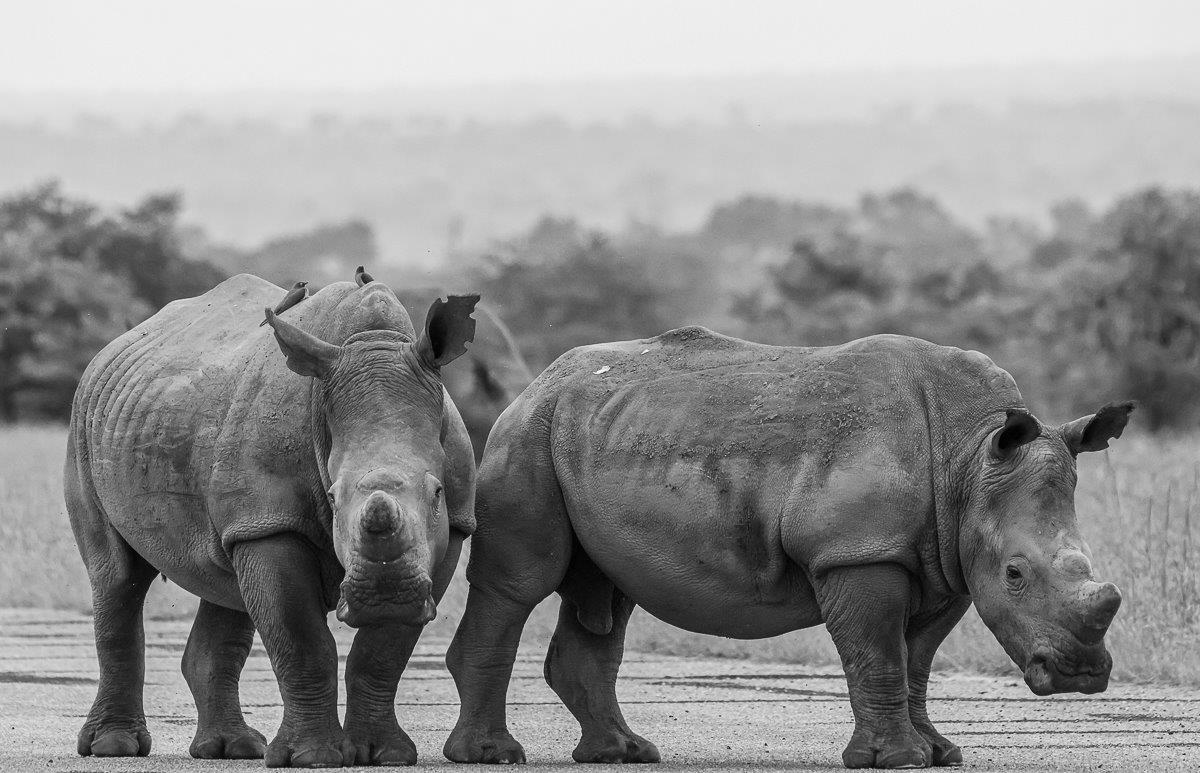
Bringing immobilising into the story is not only a no go for them because of the amount of money they need to pay to get all the equipment and the money they lose because they can’t take it all, but it is also to do with travelling with everything, leaving nothing behind and leaving no sign.
The drugs that need to be specific to the size of the animal is also very important, they don’t have the knowledge or training to know all this and safely work with the drugs, giving the animal the right amount and checking vitals of the animal.
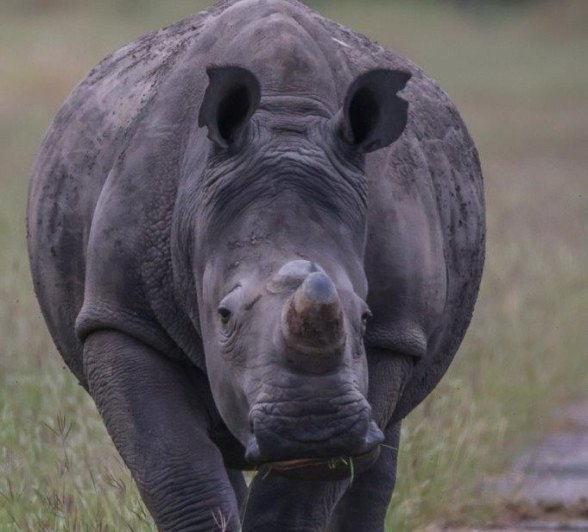
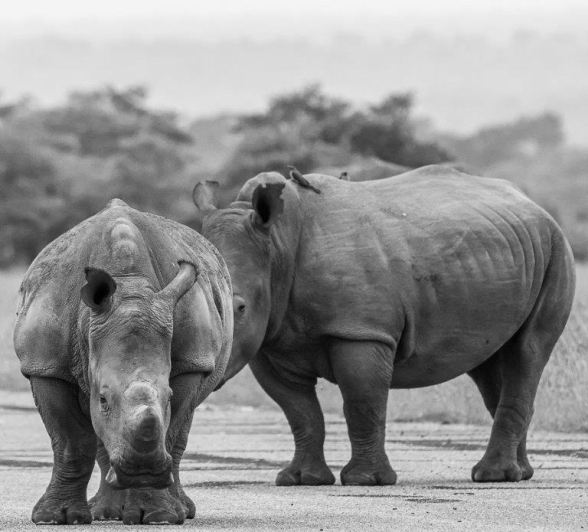
They are even going to extreme measures when it comes to tracking them, walking backwards or adding an extra sole only the wrong way around on their shoes making it look like they went a different direction. There also have been cases where they have nailed buffalo hooves onto their shoes to make it look like buffaloes walked there and not humans. Thinking outside the box is required when working in these conditions and with these incidents.
As I’m sure you can see there is a lot going into the immobilising of rhinos and safely removing the horn rather than killing them, but unfortunately the easiest and fastest method stays to kill them with a R100 (5 US dollar) bullet.
All that we can hope for is for more educational programs to be done in the countries where rhino horn is mainly distributed to, educating people about the species, the material of the horn and the usage of the horn to stop this insanity and save our species at the end of the day. It will take time but for now we will rather continue dehorning our rhinos every 1-2 years, ensuring there is not a lot for poachers to be interested in to try and protect them, and maybe, just maybe one day we will be able to see these animals again in full force with their beautiful horns in the wild.
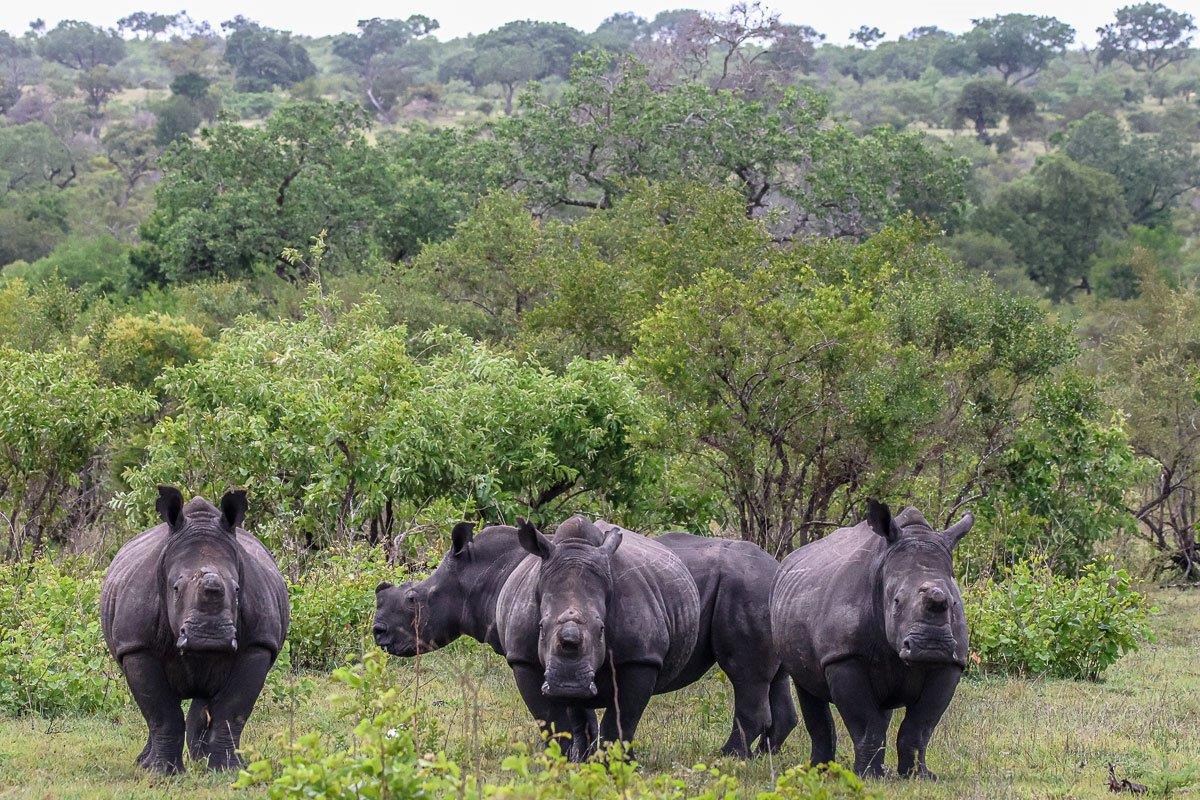
Blog by Ruan Mey (Earth Lodge Ranger)







